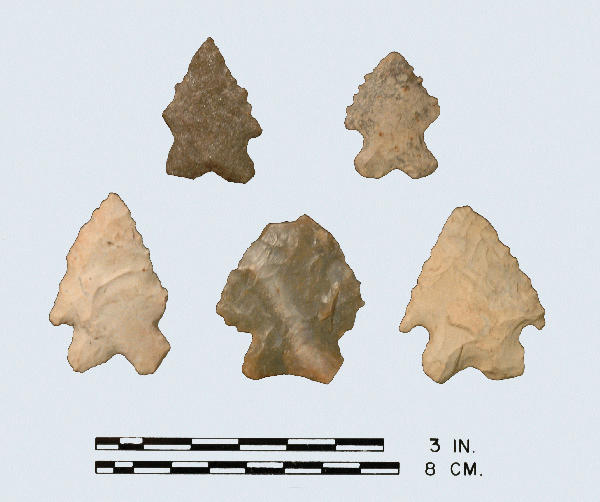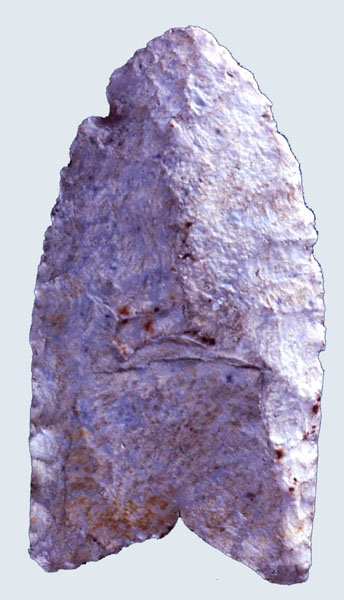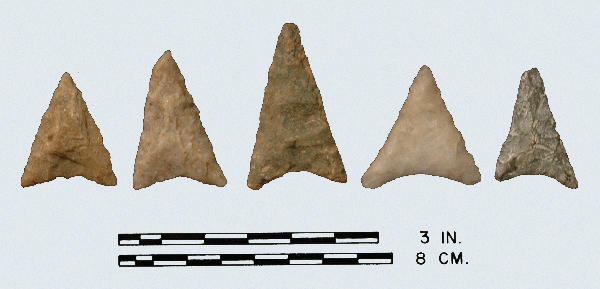
MacCorkle: Top Row: quartzite, rhyolite; Bottom Row: rhyolite, chert, rhyolite.
Type Bifurcate Early-Archaic
Defining Attributes
The MacCorkle point has a serrated blade with a lobed stem and a concave base.
Chronology
The MacCorkle point dates to the Early Archaic period, 6900 to 6700 BCE, based on the location of points recovered at the St. Albans Site in Kanawha County, West Virginia. Broyles (1971).
Description
- Blade: The blade is triangular with straight or slightly excurvate edges. Blade serrations may be shallow or deep. Edges are thinned by many long narrow flakes. Faces are flat with large random flakes.
- Base: The base is concave, thinned by multiple flakes. Some basal grinding occurs on most examples from shoulder to shoulder. The stem is lobed and rounded, and finely chipped on the edges.
- Size: Length ranges from 40 to 63 mm. Width ranges from 22 to 35 mm. Thickness ranges from 3 to 6 mm. Stem ranges from 12 to 17 mm long and 18 to 26 mm wide.
- Technique of manufacture: Soft percussion flaking followed by pressure retouched around the basal notch and serrated blade.
Discussion
The MacCorkle point is the earliest of the three point types, including St. Albans and LeCroy, that are serrated bifurcates and form a continuum from 6900 to 5800 BCE. The MacCorke type has bifurcated stems that lob out to the sides further than St. Albans. A similar point, Nottoway River Bifurcate Point, was defined by Painter in 1970.
Defined in Literature
Broyles (1971) originally defined this type based on points recovered from the St. Albans Site in Kanawha County, West Virginia.
References



